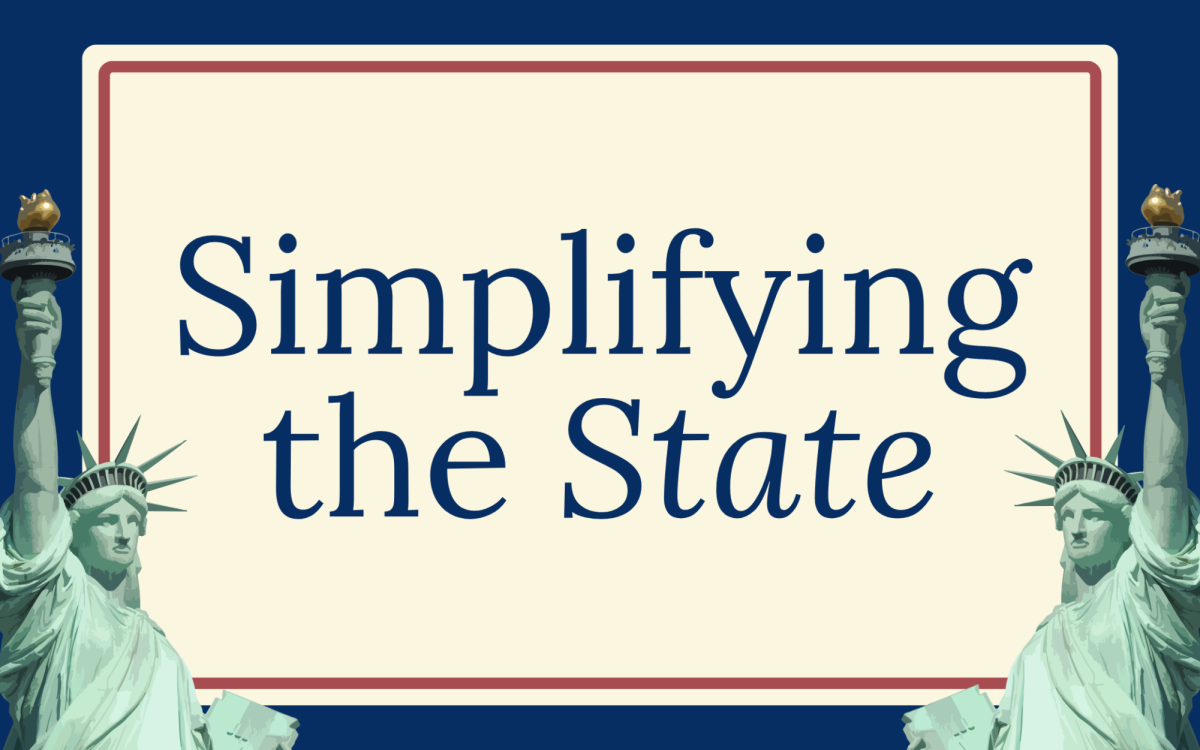Adam:
Welcome back to “Simplifying The State,” I’m Adam Watson.
Nicholas:
And I’m Nicholas Perrin.
Adam:
We’re less than 50 days out from the election, and today, we’ll be breaking down some key updates. We’ll discuss the second Trump assassination attempt that occurred earlier this week, polling updates, competitive states, and current numbers for the presidential, Senate, and House elections. We’ll also discuss local Missouri races, including Senate and governor candidates.
Let’s start with the Trump assassination attempt. A man camped outside the Mar-a-Lago golf course with an AK-47 and a sniper scope, aiming to assassinate former President Trump. Thankfully, he was unsuccessful. A Secret Service agent spotted him, opened fire, and he eventually fled but was apprehended by law enforcement. Politicians across the aisle have condemned the attempt and called for action against political extremism. However, Trump has taken a different route this time, blaming Democrats—specifically Harris’s campaign—for inciting violence by labeling him a threat to democracy.
Nicholas, what are your thoughts on Trump’s response compared to last time?
Nicholas:
It’s definitely a shift. In the past, he focused more on unity, but now he’s accusing Democrats of inciting political violence. From what I know, the would-be assassin doesn’t have clear ties to the Democratic Party. This could rally his base, but looking at polling data from the last assassination attempt, I don’t think this will have a major impact on the election, though being more vocal about it might change things.
Adam:
Right. It could shift public opinion in his favor, but probably less sympathy than last time since he wasn’t injured. This is the second assassination attempt in a short period, which is unusual in modern politics. The most recent comparable case was the attempted assassination of Gerald Ford in 1975.
It’s been a while since something like this has happened in American politics, and with two attempts so close together, it’s unprecedented. Regarding the would-be assassin, sources say he was a 2016 Trump voter who supported Bernie Sanders in 2020 but ultimately voted for Biden. This election cycle, he’s supporting a Vivek Ramaswamy-Nikki Haley ticket. So, Trump’s attempt to label him a Democratic operative likely won’t stick.
Now, let’s shift to where the election stands, starting with competitive states. Currently, polling shows tight races in Nevada, Arizona, Wisconsin, Michigan, Pennsylvania, North Carolina, and Georgia—essentially the usual battlegrounds. There’s also some talk about Iowa, Florida, and Virginia being in play, though historically, Iowa and Virginia lean red and blue, respectively. Florida could be competitive, with Trump leading by about four points. What are your thoughts on the possibility of Democrats flipping Florida, Texas, or other typically Republican states?
Nicholas:
It’s unlikely but possible. In 2020, Texas came closer than it ever had to voting blue, similar to how Georgia flipped in that election. While it’s not likely, it’s within the realm of possibility.
Adam:
Right. Georgia only went blue by a slim margin—around 10,000 votes. Nationally, Harris leads by about three points. In Florida, Trump’s lead is roughly 4.7 points, and in states like Arizona, Georgia, and Pennsylvania, it’s even closer.
Now let’s talk about Senate and House races. For either party to effectively govern, they need control of Congress. Currently, Democrats hold a technical majority in the Senate, thanks to a few independent senators who typically vote with them. But with Joe Manchin retiring, it’s likely that the seat in West Virginia will flip red.
On the Senate side, there’s new polling in Texas that shows Democratic challenger Colin Allred ahead of Ted Cruz by one point. That’s the first time I’ve seen him leading. Do you think Texas has a real chance of flipping blue?
Nicholas:
It’s possible but unlikely. Texas has been trending more competitive, similar to how Georgia flipped blue. Still, historically, it leans red.
Adam:
Yeah, it would be a big win for Democrats, though it’s a steep challenge. Now, moving on to House races—Republicans currently have 208 seats likely to go red, while Democrats have about 206, with 21 districts up for grabs. What are your thoughts on the Democrats’ chances of retaking the House?
Nicholas:
It’s possible but unlikely. Democrats would need to win over Republican voters in key districts, and I haven’t seen enough data to suggest a clear path to flipping the House.
Adam:
Yeah, it’ll be tough. They need to play both offense and defense in swing districts while trying to flip Republican-held seats. Now, let’s move to Missouri races, starting with the Senate. Josh Hawley, the Republican incumbent, is running against Democratic challenger Lucas Kunce. Kunce is a former Marine who ran unsuccessfully in 2022. Currently, Hawley has an 11-point lead in most polls, but Kunce is polling around 41%. What do you make of that?
Nicholas:
It seems unlikely that Kunce will be able to overtake Hawley, who consistently polls around 50%. Kunce hovers in the low 40s, and in a red state like Missouri, that makes it difficult for him to pull ahead.
Adam:
Right. The abortion measure, Amendment 3, might help Democrats. Polls show a slim majority in favor of abortion rights, which could drive Democratic turnout. Typically, when abortion is on the ballot, it helps Democrats. If people turn out for that, Kunce could have a better shot.
Now, onto the governor’s race. Crystal Quade, the Democratic candidate, faces Republican Mike Kehoe. The most recent polls show Quade trailing by a significant margin—36% to Kehoe’s 52%. Even if she won all undecided voters, she’d still likely lose. Do you see any path to victory for her?
Nicholas:
No, it seems highly unlikely that she’ll be able to win, especially given the polling data.
Adam:
Yeah, it looks like an uphill battle. Well, that’s all for today. Thanks for tuning in to “Simplifying the State.” We’ll be back next week with more updates. See you then!









